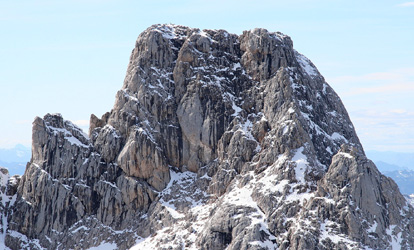Torre de Cerredo
- Torre de Cerredo
- 2648 m
- Primary factor 1931 m
- Location: North 43:11.865, West 004:51.173 (GPS at the summit)
- Location: Picos de Europa, North-West Spain
- Difficulty: YDS class 4, PD (with snow)
- Climbed: October 6, 2008

Torre de Cerredo
|
 |